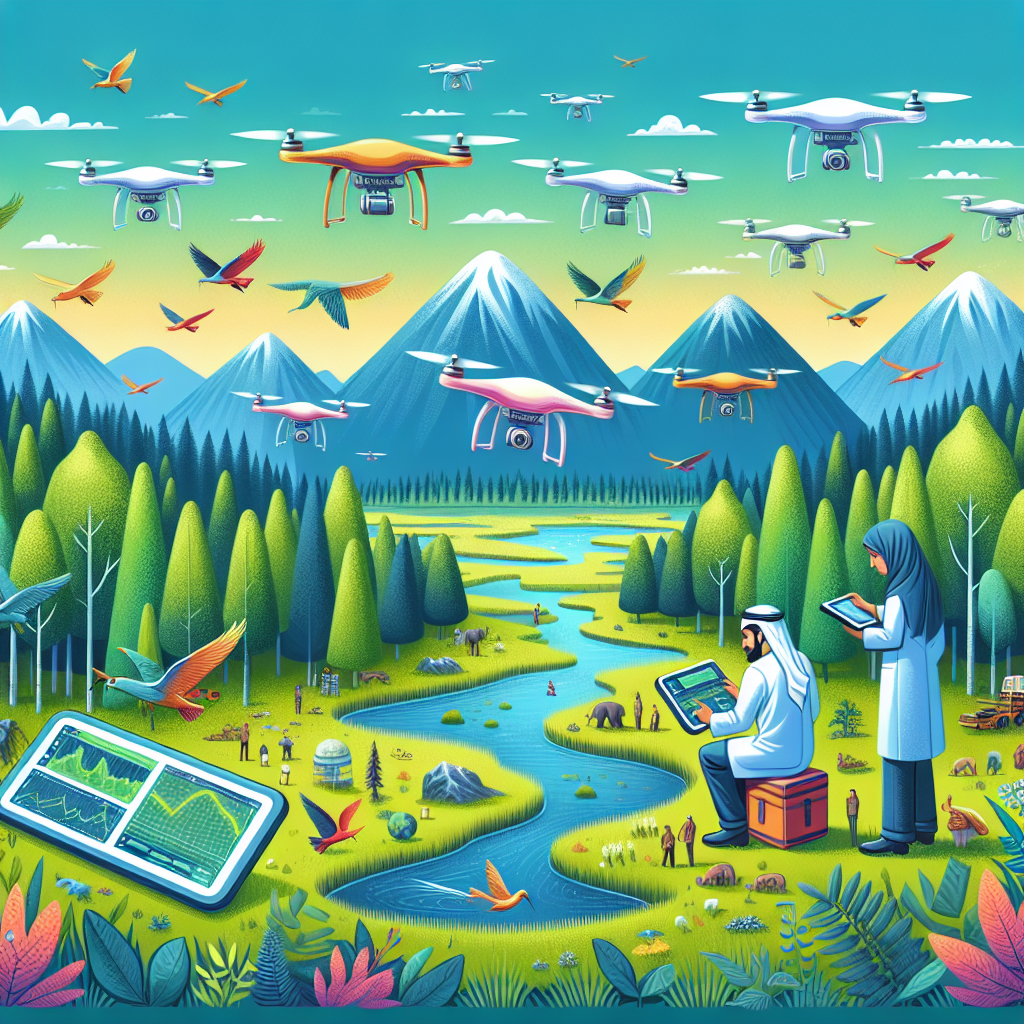Introduction
In recent years, drones have emerged as a groundbreaking tool in environmental research and data collection. These unmanned aerial vehicles (UAVs) are transforming the way researchers gather information about ecosystems, monitor wildlife, and assess environmental changes. This article explores the vital role drones play in environmental studies, their advantages, applications, and future potential.
Advantages of Drones in Environmental Research
- Cost-Effective: Drones are considerably cheaper to operate than manned aircraft and traditional survey methods. This affordability enables more frequent data collection without straining research budgets.
- Accessibility: Drones can effortlessly access remote or hazardous locations that may be difficult or dangerous for humans to reach, such as dense forests, high mountains, and disaster-stricken areas.
- High-Resolution Data: Equipped with advanced cameras and sensors, drones can capture high-resolution images and collect intricate data, allowing for detailed analysis of the environment.
- Speed: Drones can cover large areas in a short amount of time, significantly accelerating the data collection process compared to traditional methods.
- Real-Time Monitoring: Many drones can transmit data in real-time, enabling researchers to monitor changes as they happen and make timely decisions based on the data collected.
Applications of Drones in Environmental Research
Drones have diverse applications in the field of environmental research, some of which include:
1. Habitat Mapping and Wildlife Monitoring
Drones are effectively used to create detailed maps of wildlife habitats, allowing researchers to monitor animal populations and study their behaviors without significant human interference. This non-invasive method is crucial for endangered species protection and biodiversity conservation.
2. Forest and Vegetation Analysis
By utilizing multispectral sensors, drones can assess forest health, measure vegetation cover, and evaluate carbon storage capacities. This data is imperative for understanding ecosystem functions and informs conservation strategies.
3. Climate Change Studies
Drones facilitate the monitoring of climate change impacts, such as glacier retreat, deforestation, and habitat shifts. By collecting long-term data, researchers can better understand and predict future environmental changes.
4. Disaster Response and Management
In the wake of natural disasters, drones can quickly survey affected areas, providing critical data for assessing damage and planning recovery operations. Their ability to reach inaccessible regions makes them invaluable during emergencies.
5. Agriculture and Environmental Monitoring
Agricultural researchers use drones to monitor crop health, assess irrigation efficiency, and evaluate soil conditions. This information helps farmers optimize resource use and minimize environmental impacts.
Challenges and Limitations
Despite their numerous advantages, the use of drones in environmental research does present some challenges:
- Regulatory Hurdles: Drones are subject to various regulations, which can vary significantly between countries. Navigating these regulations can be complex and time-consuming.
- Technical Limitations: Battery life, payload capacity, and sensor quality can limit the effectiveness of drones in certain research scenarios.
- Data Analysis: The high volume of data collected by drones requires advanced analysis techniques, which may necessitate specialized skills and software.
The Future of Drones in Environmental Research
As technology continues to advance, the role of drones in environmental research will only grow. Innovations in sensor technology, artificial intelligence, and machine learning will enhance data collection capabilities and analysis efficiency. Furthermore, the integration of drones with other technologies, such as satellite imagery and ground-based sensors, will provide a more comprehensive understanding of environmental dynamics.
Conclusion
Drones are revolutionizing the field of environmental research and data collection, offering cost-effective solutions for monitoring ecosystems, wildlife, and climate change. While challenges remain, the future of drones in this field is bright, promising even greater contributions to our understanding and protection of the environment.

